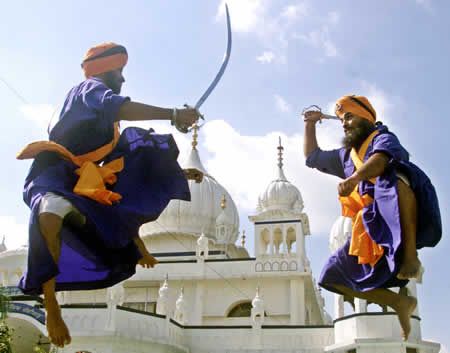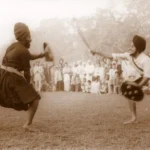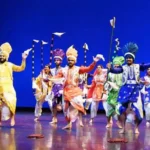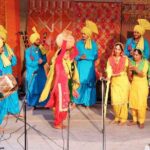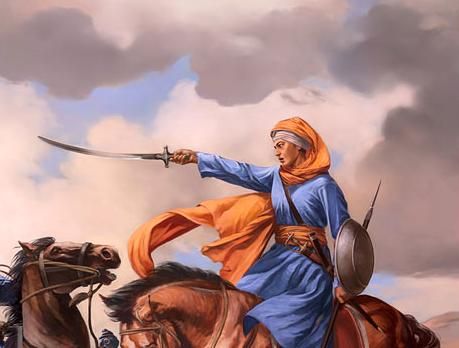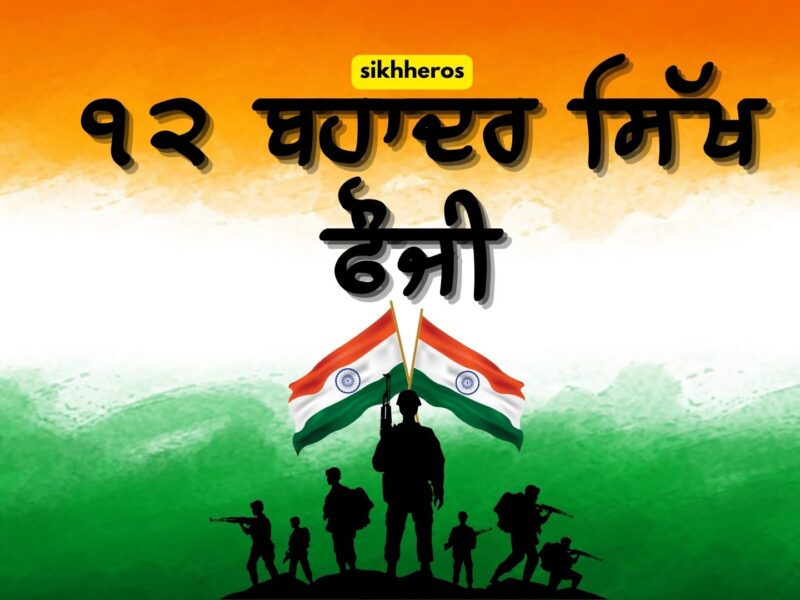Gatka is a type of martial art most commonly practiced by Sikhs from the Punjab and other closely related ethnic groups, such as Hindkowans (Gurmukhi: Shahmukhi: ; Hindi: Urdu: ). The wooden sticks used in this kind of stick-fighting are meant to resemble swords. The wooden stick is known by its Punjabi name, “gatka,” which may have been derived from the Sanskrit word “gada,” which means “mace” in English.
The Gatka stick is typically 3-3.5 feet (91-107 cm) long and about a half-inch thick. It is constructed of wood (13 mm). It has a 6-7 inch (15-18 cm) fitting leather hilt that is frequently embroidered with multicolored threads in Punjabi fashion. A shield, or phari in its native language, is the other item utilized in the sport. It is constructed of dry leather, has a rounded form, and is 9 by 9 inches (23 cm). To protect the player’s hand in the event of a full-contact hit from an opponent, it is packed with either dry grass or cotton.
Although most of the Gatka forms performed in the west today are Europeanized variants of Shastar Vidya, the classic martial art of the Sikhs, Gatka has its origins in Punjab and dates back to the fifteenth century. In the latter half of the 20th century, gatka had a resurgence. An international gatka federation was established in 1982 and formalized in 1987.
History
Gatka World Cup
The Sikh gurus instructed students in the theory and methods of Gatka. It has been taught in numerous akharas (arenas) throughout the world and passed down through an uninterrupted line of ustds (masters). Gatka was used in the Sikh Wars and has gone through extensive combat testing. It is based on the fusion of the spirit and body (miri piri), but it also stems from the need to defend dharma (goodness). As a result, it is frequently regarded as both a spiritual and physical practice.
The new British administration of India outlawed art following the Second Anglo-Sikh War in the middle of the 19th century.
The Sikhs helped the British put an end to the Indian Rebellion of 1857 by helping to subdue the uprising. Due to this aid, limitations on fighting were loosed; nonetheless, the Punjabi martial arts that reappeared after 1857 had undergone major changes. The new method used a wooden training stick and sword combat methods. In honor of its main weapon, it was called gatka. In the 1860s, the British Indian Army primarily used gatka to learn hand-to-hand fighting. Gatka has been included in the planned Khelo India Youth Games 2021, which are anticipated to take place in Haryana, along with three other indigenous games, including Kalaripayattu, Thang-Ta, and Mallakhamba. [9] In India, this is a national sporting occasion.
Competition
The present competitive part of gatka, known as khel (meaning “sport” or “game”), was first utilized as a technique of sword-training (fari gatka) or stick-fighting (lathi khela) in the Middle Ages. Khel gatka has always been a part of different ethnocultural groups’ martial arts, even though it is most frequently identified with Sikhs today. The Tanoli and Gujjar populations in India and Pakistan continue to practice it.
Affecting Defendu
Gatka, jujutsu, Chinese martial arts, and “gutter fighting” were methods that Captain William E. Fairbairn and Captain Eric Anthony Sykes used to create the Defendu system. At the Commando Basic Training Center in Scotland’s Achnacarry, close-combat training was provided for soldiers using this way.
From bare-handed combat to utilizing swords, kirpans, lathis, axes, wooden poles, and more, this martial art has advanced. The first step is to master the fundamentals with a wooden bamboo stick. Kirpans are utilized afterward. They are available in a variety of sizes and forms to meet different needs.
Then, the shields are presented. Even they come in a variety of shapes, from plain, basic ones to big, spikey ones. Other Shastras are employed to master this art form once one is skilled in the use of these fundamental weapons. Because handling and using those weapons can be hazardous, using them requires a high level of discipline, focus, and appropriate technique.
Shastras like the Kamar Kasa or the Dastar (turban) (belt) are worn by the Nihangs as ornaments rather than being utilised in battle. The Sikhs are encouraged to fight bravely by playing the Ranjit Nagara (the drum of victory) and reciting Gurbani. These two are also regarded as Shastras employed in Gatka. Not only the fighting part is taught during the learning process. This type of art represents the fusion of the body, mind, and soul. This art form trains you to exercise with dedication and discipline and to maintain mental equilibrium.
The most entertaining and interesting venue to see this sport is at any of the major Sikh festivals, in addition to the several academies in India that offer training facilities. In addition to the procession, hymns, and mouthwatering cuisine, trained professionals provide entertainment in the form of gatka.
So be sure to keep yourself free to take part in the celebrations the next time a Sikh holiday approaches!
